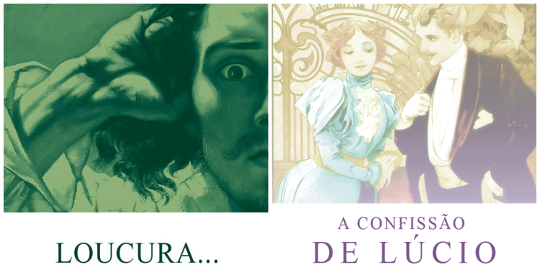Jane Austen was born on December 16, 1775, in Steventon, England. She had little formal education and finished her studies at home. She started writing literary texts around the age of twelve. But, in life, her books were published anonymously, that is, without the identification of their authorship.
The novelist, who died on July 18, 1817, in Winchester, wrote works that show transition marks between English Romanticism and Realism. Thus, their love stories have an ironic tone and make social criticism. These characteristics are also present in one of her best-known books, the novel Pride and Prejudice.
Read too:William Shakespeare — the best-known English playwright and poet
Summary about Jane Austen
Jane Austen, English writer, was born in 1775 and died in 1817.
The writer has devoted her entire life to literature and has never married.
Her style marks a transition between English Romanticism and English Realism.
Her novels are marked by irony and social criticism.
.Pride and PrejudiceHer best known work is
Do not stop now... There's more after the advertising ;)
Jane Austen Biography
Jane Austen born on December 16, 1775, in Steventon, England. Little is known of details about her life. After her death, her sister Cassandra ended up burning much of the author's correspondence or deleting parts of some of her letters. However, what can be concluded is that Austen was a very intelligent woman.
She was the daughter of a clergyman and was part of a large family—she had six brothers and one sister. Her brother Henry was the one the author had the most affinity with, in addition to Cassandra. Later, he would be her agent. O author's father valued his children's education. So at the age of seven, Austen and her sister left for Oxford to study.
However, they had to return to Steventon shortly thereafter, as they became ill after contracting typhus in 1783. At the age of nine, the writer and her sister began studying at The Abbey School, a girls' school in the city of Reading. However, due to financial difficulties, they were unable to continue attending classes. They then started studying at home.
At the age of 12, the author was already writing literary texts. She was later courted, in late 1795, by the Irishman Thomas Lefroy (1776-1869). But, for financial reasons, he chose to marry a rich young woman. Approximately two years later, in 1797, Jane Austen's father showed the first version of Pride and Prejudice to a publisher, who refused to publish the work.
Single, in 1801, Austen moved with her family to Bath. There, she became involved with a young cleric, who died months later. She then agreed to marry, in late 1802, the young Harris Bigg-Wither (1781-1833), but withdrew the next day.
When Jane's father died in 1805, she, her mother, and sister came to depend on the men in the family. So the following year they moved in with Frank (her brother) and his wife to Southampton. Until, in 1809, Edward, another author's brother, offered them a house in Chawton.
Two years later, in 1811, Jane Austen published the novel Reason and sensibility. But the author did not reveal her name; instead, she published the book with the inscription “by a lady”. Years later, around 1815, she already had some books published, but she still didn't sign her works.
Then Austen began to show symptoms of an illness that was unknown at the time, probably what is known as Addison's disease. So, seeking medical treatment, on May 24, 1817, she and her sister moved to Winchester, where the author died on July 18, 1817, with 41 years of age.
Read too: Lord Byron — English poet marked by an extremely pessimistic writing
Characteristics of the work of Jane Austen
Jane Austen has a transition writing between the Romanticism it's the Realism English. Her novels are characterized by ironic tone as well as social criticism. The main characters are female, and the universe of women from the late 18th and early 19th centuries is portrayed.
Although her books talk about love, the romantic idealism is mitigated by love frustration and by the elements of the daily domestic reality of the bourgeoisie of the time. Thus, marriage comes into question, but also the dependence of women on it.
Works by Jane Austen
Love and friendship (1790);
lady susan (1794);
Reason and sensibility (1811);
Pride and Prejudice (1813);
Mansfield Park (1814);
emma (1815);
Northanger Abbey (1818);
Persuasion (1818).
Pride and Prejudice
![Cover of the book Pride and Prejudice, by Jane Austen, published by the publisher L&PM [1]](/f/befece12ecc3c55c2264afb26921bb2c.jpg)
in the novel Pride and Prejudice, one of Jane Austen's most famous works, young Elizabeth Bennet meets Fitzwilliam Darcy. His initial dislike for the boy, as the narrative progresses, turns into love. But the story begins when Mr. Bingley decides to spend a few days off at the house next door to the Bennett family in Meryton.
He is a marriageable young man and has two sisters. Caroline and Louisa go with their brother to Meryton. Also present at the family home are Mr. Hurst, the boy's brother-in-law, and Mr. Darcy. However, Bingley and his friend Darcy have opposing personalities, as Bingley is more likeable, while the other is less outgoing.
Apparently, the love story of the novel is between Bingley and Jane, the sister of Elizabeth Bennett. As is common in romantic romances, there is an obstacle to their love, as the young man's sisters do not agree with such a relationship. Turns out Jane wouldn't be socially up to the Bingleys.
However, we soon realized that the proud Elizabeth is the protagonist. After being ignored by Darcy, her pride prevents her from realizing the boy's true character. For a time, she is tricked by Wickham, a mean-spirited individual and Fitzwilliam Darcy's enemy. So when Bingley pulls away from Jane, Elizabeth sees Darcy's influence in it, and her dislike of him only increases.
Elizabeth then discovers that Georgiana, Darcy's sister, has been seduced and abandoned by Wickham. However, Lydia Bennet runs away with him. The strength of Darcy's character is then evidenced when he gets Wickham to marry Lydia. That done, one can only hope for a happy ending for Jane and Bingley and Elizabeth and Darcy.
Read too: Victor Hugo — celebrated author of French romanticism
Jane Austen Phrases
Next, let's read some sentences by Jane Austen, taken from her books Pride and Prejudice, emma and Reason and sensibility:
"Half the world cannot understand the pleasures of the other half."
"Happiness in marriage is about luck."
"The more I know the world, the more dissatisfied I am."
“Shyness is just the effect of a feeling of inferiority.”
"Should we reject all probabilities because they are not certain?"
"When you don't want to be convinced of something, you always find reasons to doubt."
"Only think about the past when you have good memories."
Image credits
[1] L&PM Publisher (reproduction)
by Warley Souza
Literature teacher



